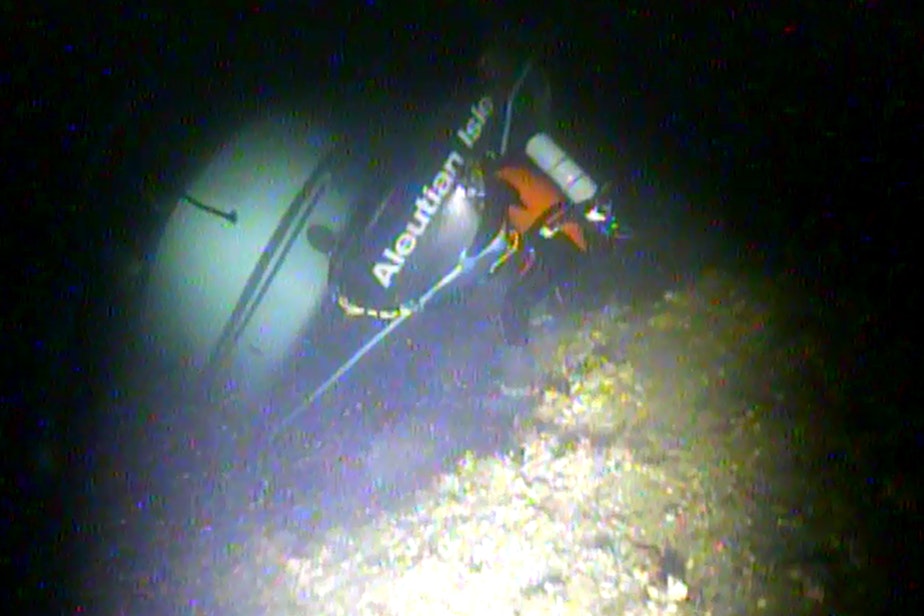Fishing boat that sank in orca waters ran into trouble 24 hours earlier
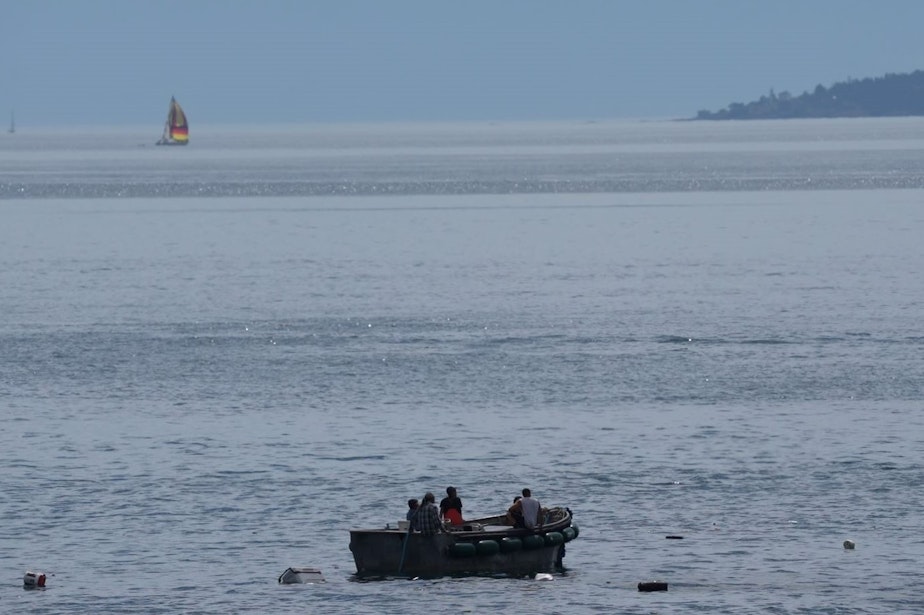
The fishing boat that sank off San Juan Island in August had run into trouble – apparently running aground – the previous day.
The U.S. Coast Guard and other agencies have declined to say why the boat sank, or even what it was doing before it went down, citing the ongoing investigation of the maritime disaster.
The sinking sent a two-mile sheen of diesel fuel into prime habitat for the region’s endangered orcas. Nearly three weeks later, the boat still sits 240 feet underwater, an ongoing risk for leaking more diesel into Haro Strait.
But eyewitness accounts, photographs, and public records fill in some of the information gaps.
The boat, called the Aleutian Isle, was exiting the Cap Sante Marina in Anacortes on Friday, Aug. 12, the day before it sank, when it appeared to run aground.
Anacortes had one of its lowest tides of the year that day, bottoming out at -2.6 feet at 11:17 a.m., according to National Oceanographic and Atmospheric Administration tide tables.
Sponsored
Eyewitness Brit Reese, of Sedro-Woolley, was shooting pictures near the marina entrance while waiting for a friend whose boat was anchored just outside.
“I was sitting there on the dock when I saw this big vessel attempting to leave the marina," Reese said. "I thought, ‘This is going to be interesting.’ And it was.”
His view of the Aleutian Isle was partially obscured by one of the rock jetties that protect the marina from incoming waves. But, he said, he saw the boat stop abruptly.
“I watched this vessel run aground right at the breakwater,” Reese said. “You could hear the engines rev up, and they were not moving any further forward.”
“I knew they had run aground,” he said. “It was very obvious.”
Sponsored
From the timestamps on Reese’s photos, the boat appeared to have run aground just after 1 p.m., when the day’s extreme low tide would have started rising from its nadir but would still be lower than a typical low tide.
The Aleutian Isle is a purse seiner, a type of commercial fishing boat that works in tandem with a smaller skiff to gather a fishing net into the shape of a purse, before hauling a catch of salmon aboard.
Crew on the immobilized Aleutian Isle tied a line from their boat to its skiff. Reese watched the skiff churn the water as it tugged the larger fishing boat afloat again and away from the marina.
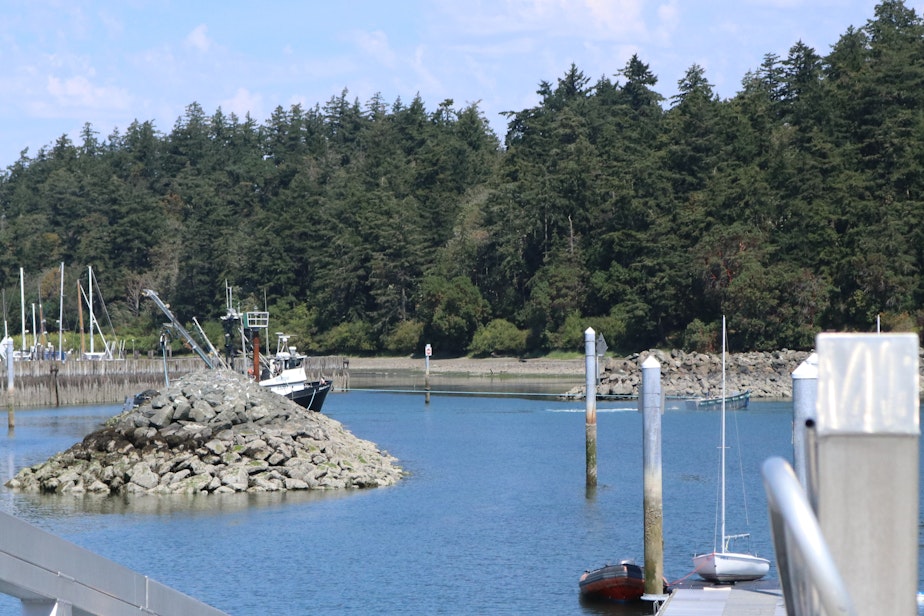
Sponsored
Port officials say the well-marked channel exiting the marina would be about 10 feet deep on that day’s very low tide.
“When you make the decision to leave at a minus tide, you’re making sure you have to watch the water,” said Dan Worra, executive director of the Port of Anacortes, which runs the marina.
“We don’t put out warnings. You need to know your own tide table,” he said.
“The entry channel is well marked and deep but woe be to the boater who wanders out of the channel,” warns the webpage for Cap Sante Marina at ActiveCaptain, an online boating community
Worra said the marina has video footage of the incident from its security cameras, but U.S. Department of Homeland Security regulations prevent him from sharing it.
Sponsored
He summed up the incident: “Low tide, big boat.”
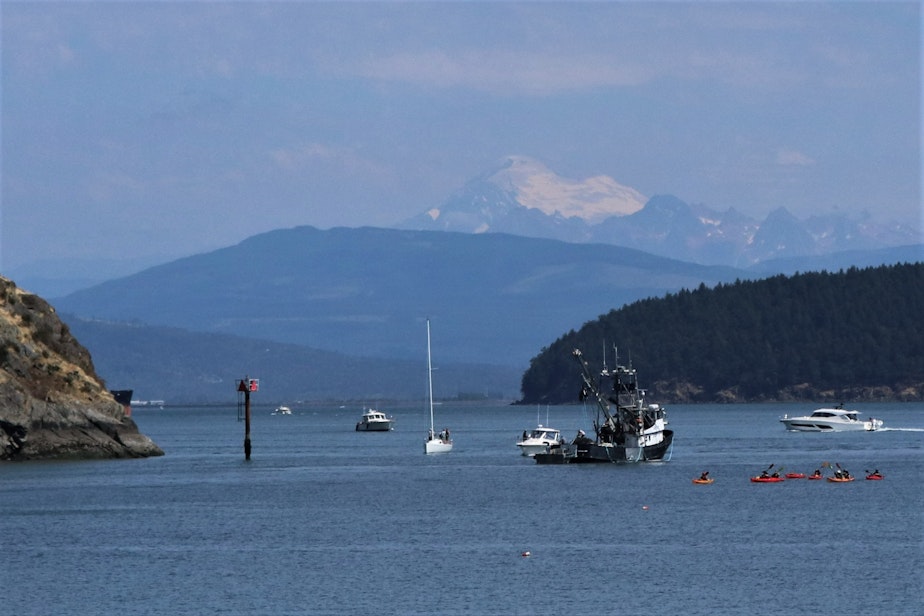
The Aleutian Isle sank about 24 hours later while fishing for sockeye salmon.
A tribal fishery for Fraser River sockeye salmon opened in the San Juan Islands, west of Anacortes, at 5 o’clock that Saturday morning. By 2 p.m., all that could be seen of the 64-ton vessel was some rubber fenders, a cooler, and other flotsam bobbing in the waves and a multicolored slick of diesel fuel.
It’s unclear what, if any, damage the likely grounding did to the Aleutian Isle.
Sponsored
“We don’t have many people go aground. It’s a fairly unusual occurrence,” Worra said. “People stick to the channel for the most part.”
Worra said when a grounding does occur, the owner has to deal with any consequences.
“It’s the boat owner’s responsibility, including for fuel spills, petroleum spills, hazardous material spills. The onus is on the boat owner,” he said.
Penalties for spilling oil or petroleum products in Washington state waters go up to $10,000 per day of discharge or up to $500,000 a day if the spill is deemed reckless or intentional.
But Washington Department of Ecology spokesperson Ty Keltner said who is responsible for a fuel spill at sea is not straightforward.
“That’s what the investigations are always about: trying to determine who’s responsible for whatever happened,” he said. “It’s never cut and dry.”
It’s unknown who was on board or captaining the boat in its final days or what caused it to sink.
Public records obtained from the Port of Anacortes indicate the Aleutian Isle is owned by a Matt Johnston of Mount Vernon.
Johnston has not responded to KUOW interview requests.
San Juan County emergency manager Brendan Cowan said at an Aug. 19 county council meeting on the spill that the Johnston family had been participating and engaged in all the incident response team’s meetings.
The incident team includes the Coast Guard, the Washington State Department of Ecology, San Juan Office of Emergency Management, and the Swinomish Tribe.
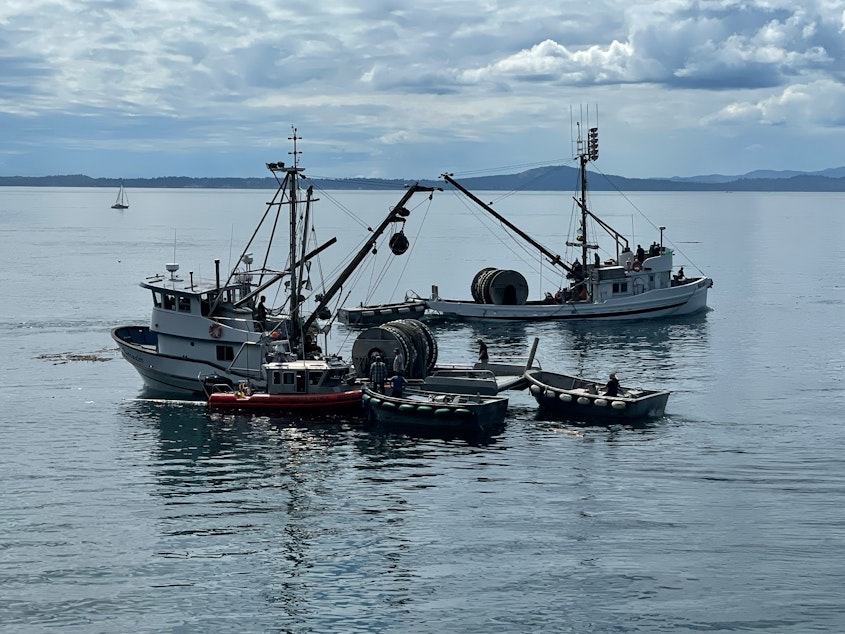
As the Aleutian Isle sank, two other purse seiners rescued the five crew members, who had abandoned their sinking boat for its support skiff. The fishermen also waved down a Swinomish Fisheries Department patrol boat for assistance before Coast Guard vessels arrived.
“The Swinomish Tribe will not be providing any comments,” Amy Trainer, the tribe’s environmental policy director, said by email.
The Swinomish Tribe has a long track record — from ancient clam gardens to modern habitat restoration projects — of stewarding the Salish Sea. But in this instance, a Swinomish boat taking part in a fishery overseen by the Swinomish fisheries department led to a diesel spill in the same waters.
Nearly three weeks after it sank, the Aleutian Isle is now sitting on its side in 240 feet of water, according to the Coast Guard. Emergency responders ruled out earlier plans to siphon up the remaining diesel — due to the risk of spilling more fuel — and are now focused on raising the entire vessel.
Activist Blair Englebrecht with the Puget Soundkeeper Alliance said, whoever is determined to be responsible for the spill, the state wasn’t ready for it.
“The state failed to create and enact a plan quickly enough and as such the boat shifted and ended up in [more than] 200 feet of water, making recovery much more difficult,” she said. “The vessel still has not been recovered to this day.”
Englebrecht said it took too long for responders to assemble the personnel and noisemakers needed to deter any whales from entering the polluted area. She said it was pure luck that the region’s endangered orcas decided not to swim into the diesel-tainted waters.
“It just was a demonstration that if this had been a catastrophic oil spill, we're not prepared to handle that currently,” she said.
Deepwater divers breathing a specialized helium-oxygen mix that took days to procure have removed netting that entangled the sunken boat. On Thursday, they also secured valves and fuel vents that may have been responsible for the sunken ship occasionally belching up diesel well after the sinking.
“We don't fully understand why the burps are happening,” emergency manager Brendan Cowan told the San Juan County Council on Aug. 19.
Dive teams hope to bring the Aleutian Isle to the surface before it burps any more diesel or other pollutants. It’s no small task, especially with the dangerous waters of Haro Strait limiting divers to about 40 minutes of underwater work each day.
“We're dealing with one of the most complex environments to do dive operations anywhere, right?” Cowan said. “We've got cold water, strong currents. It's deep. There's just a lot of reasons why it's very complicated.”
Correction 9/3/22 1:00 p.m.: An earlier version overstated the time it took responders to have whale deterrents available at the site of the diesel spill.
